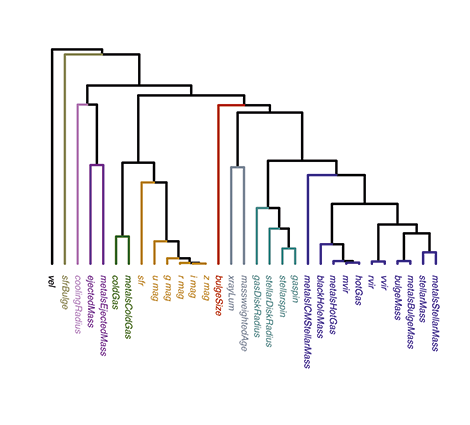Analysis of Multidimensional Astronomical Datasets (AMADA )
We present AMADA, an interactive web application to analyse multidimensional datasets. The user up- loads a simple ASCII file and AMADA performs a number of exploratory analysis together with contemporary visualisations diagnostics.
The package performs a hierarchical clustering in the parameter space, and the user can choose among linear, monotonic or non-linear correlation analysis. AMADA provides a number of clustering visualisation diagnostics such as heatmaps, dendrograms, chord diagrams, and graphs. In addition, AMADA has the option to run a standard or robust principal components analysis, displaying the results as polar bar plots. The code is written in R and the web interface was created using the SHINY framework.
Full citation: de Souza and Ciardi, 2015, Astronomy and Computing, 12, 100-108





